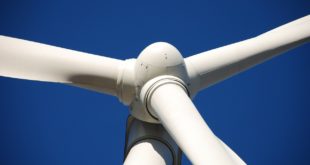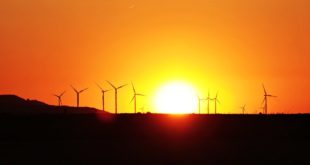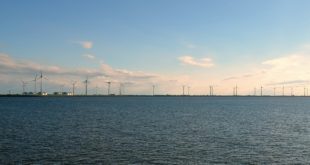You have to check out this new development in the wind energy field. Altaeros Energy has come up with a blimp that is tethered to the group and can be raised from 300-1500 ft in the air to capture wind energy which is then transmitted to the ground via the tether.
From their press release:
Altaeros Energies, a wind energy company formed out of MIT, announced today that it has demonstrated high altitude power production from an automated prototype of its airborne wind turbine.
The company recently completed testing of a 35-foot scale prototype of the Altaeros Airborne Wind Turbine (AWT) at the Loring Commerce Center in Limestone, Maine. The prototype, fabricated in partnership with Doyle Sailmakers of Salem, Massachusetts, achieved several key milestones. The AWT climbed up 350 feet high, produced power at altitude, and landed in an automated cycle. In addition, the prototype lifted the top-selling Southwest Skystream turbine to produce over twice the power at high altitude than generated at conventional tower height. The turbine was successfully transported and deployed into the air from a towable docking trailer.
Altaeros Airborne Wind Turbine prototype during testing in Limestone, Maine (Altaeros Energies 2012)
Altaeros is developing its first product to reduce energy costs by up to 65 percent by harnessing the stronger winds found over 1,000 feet high and reducing installation time from weeks to days. In addition, it is designed to have virtually no environmental or noise impact and to require minimal maintenance. The Altaeros AWT will displace expensive fuel used to power diesel generators at remote industrial, military, and village sites. In the long term, Altaeros plans to scale up the technology to reduce costs in the offshore wind market.
“For decades, wind turbines have required cranes and huge towers to lift a few hundred feet off the ground where winds can be slow and gusty,” explained Ben Glass, the inventor of the AWT
and Altaeros Chief Executive Officer. “We are excited to demonstrate that modern inflatable
materials can lift wind turbines into more powerful winds almost everywhere—with a platform
that is cost competitive and easy to setup from a shipping container.”
The AWT uses a helium-filled, inflatable shell to ascend to higher altitudes where winds are
more consistent and over five times stronger than those reached by traditional tower-mounted
turbines. Strong tethers hold the AWT steady and send electricity down to the ground.
The lifting technology is adapted from aerostats, industrial cousins of passenger blimps that for
decades have lifted heavy communications and radar equipment into the air for long periods of
time. Aerostats are rated to survive hurricane-level winds and have safety features that ensure a
slow descent to the ground.
The emerging airborne or “high altitude” wind sector was recently featured on the cover of the
March 2011 issue of Popular Mechanics. In December 2011, the Federal Aviation
Administration (FAA) released draft guidelines allowing the new class of airborne wind systems
to be sited under existing regulation.
 Alternative Energy HQ solar power for homes, wind energy, and bio fuel issues
Alternative Energy HQ solar power for homes, wind energy, and bio fuel issues






